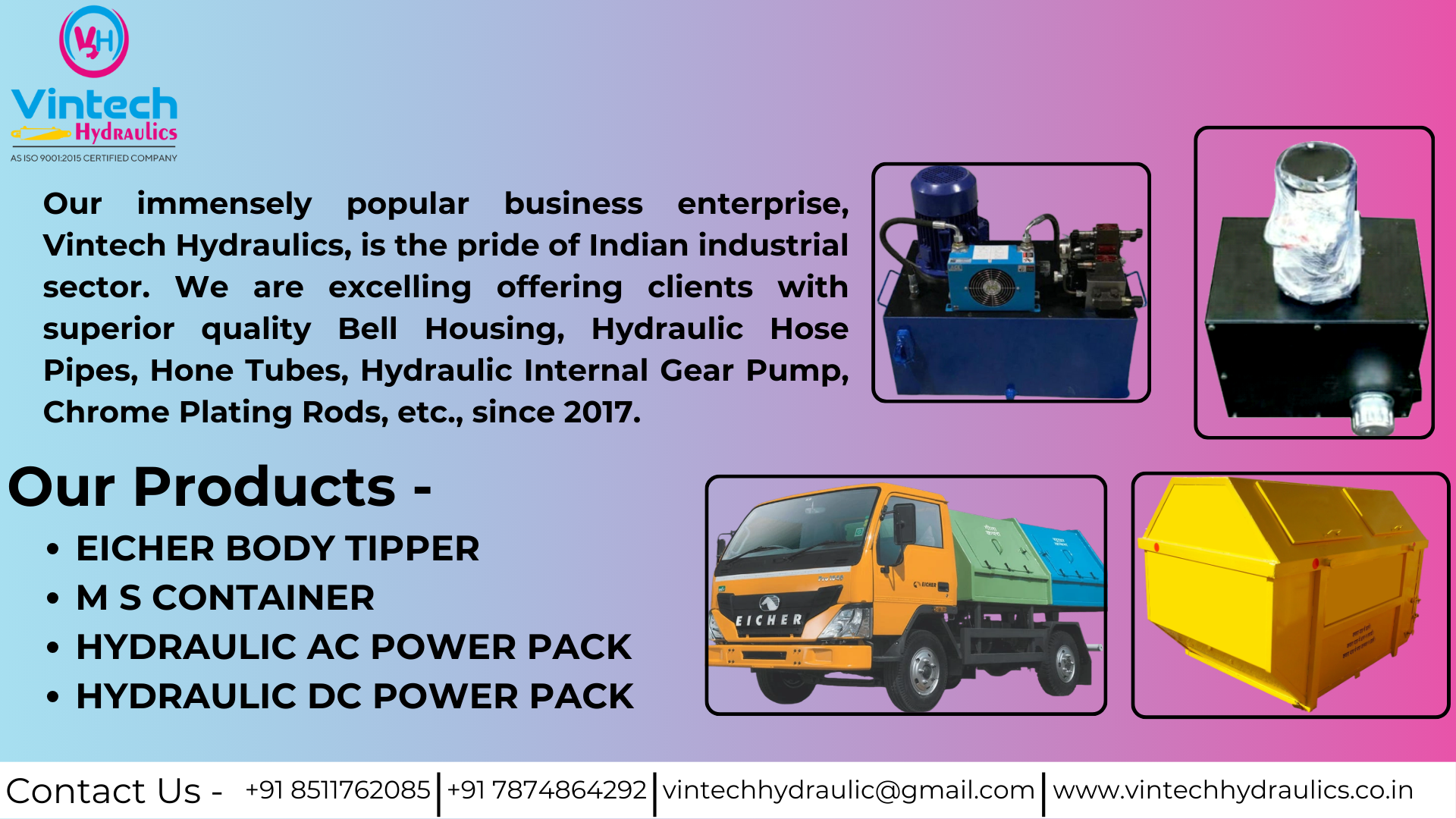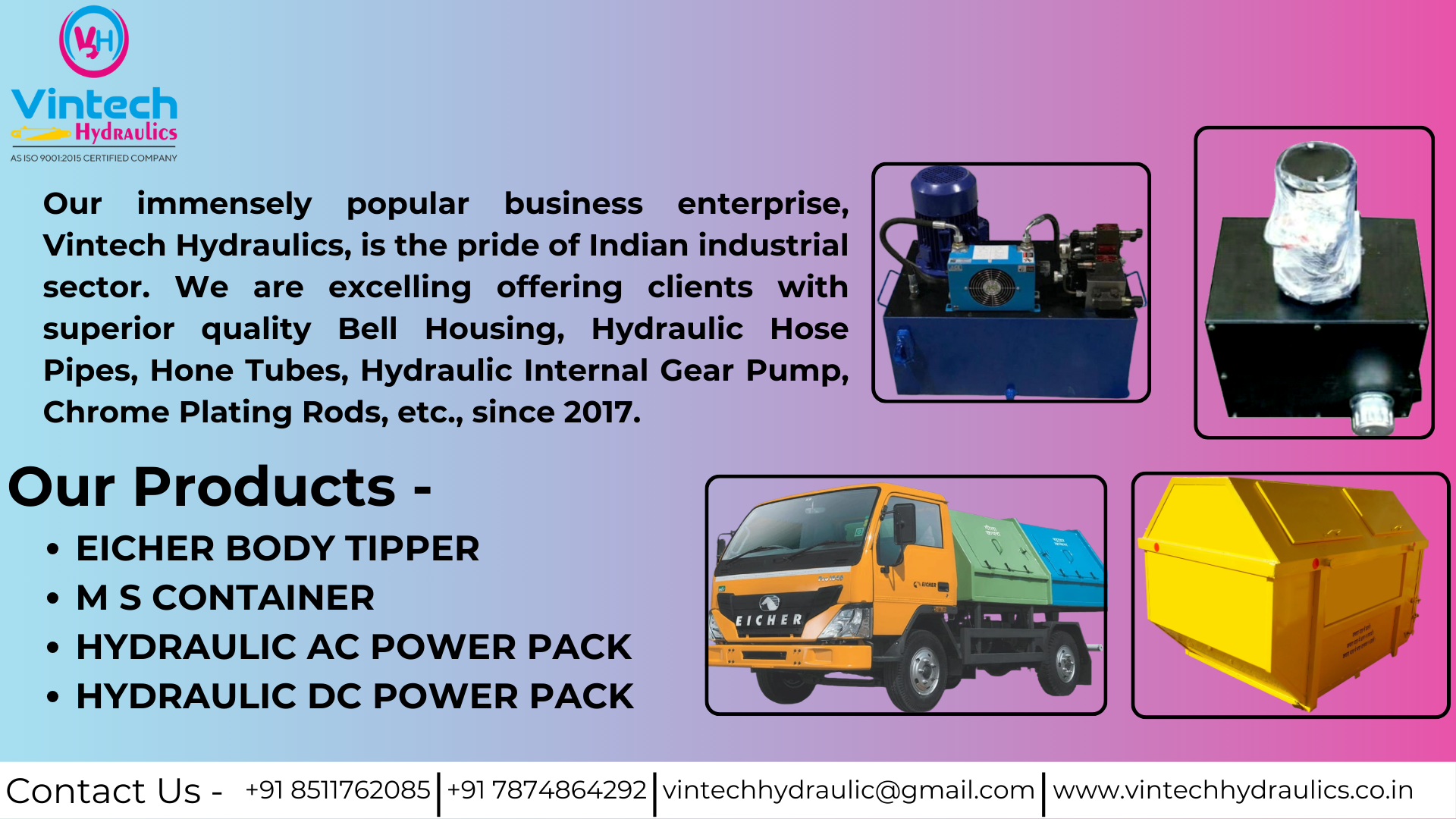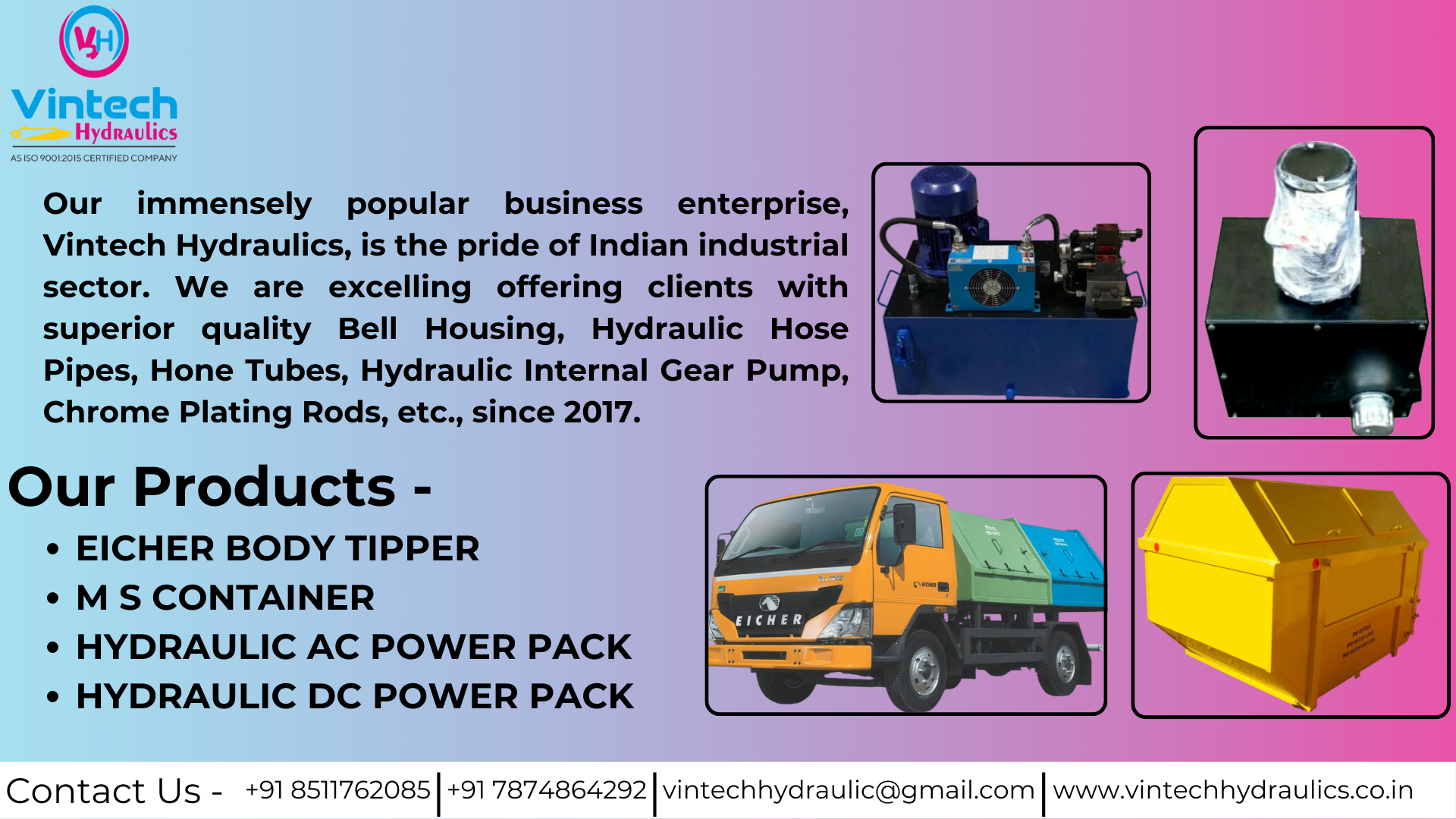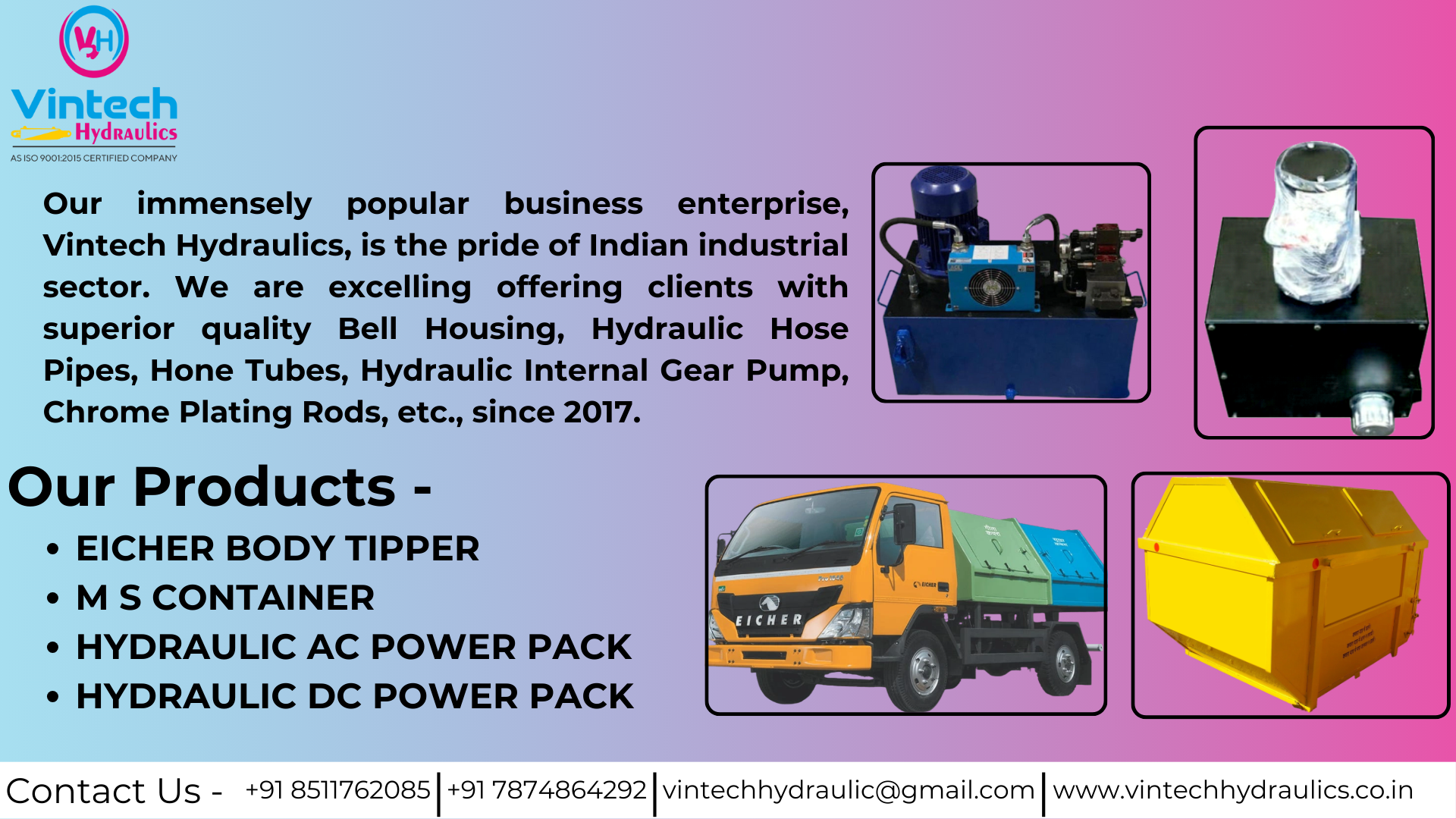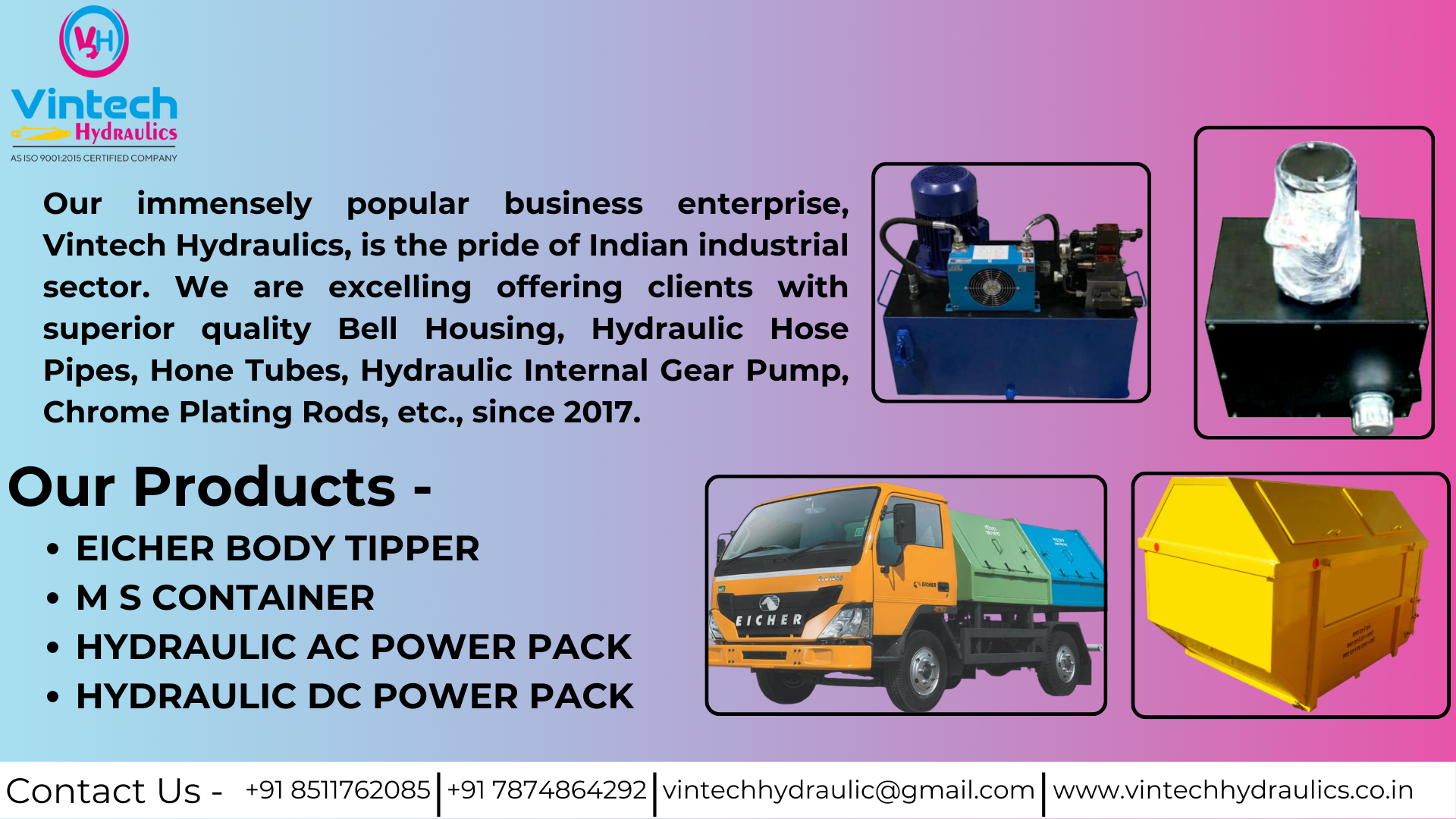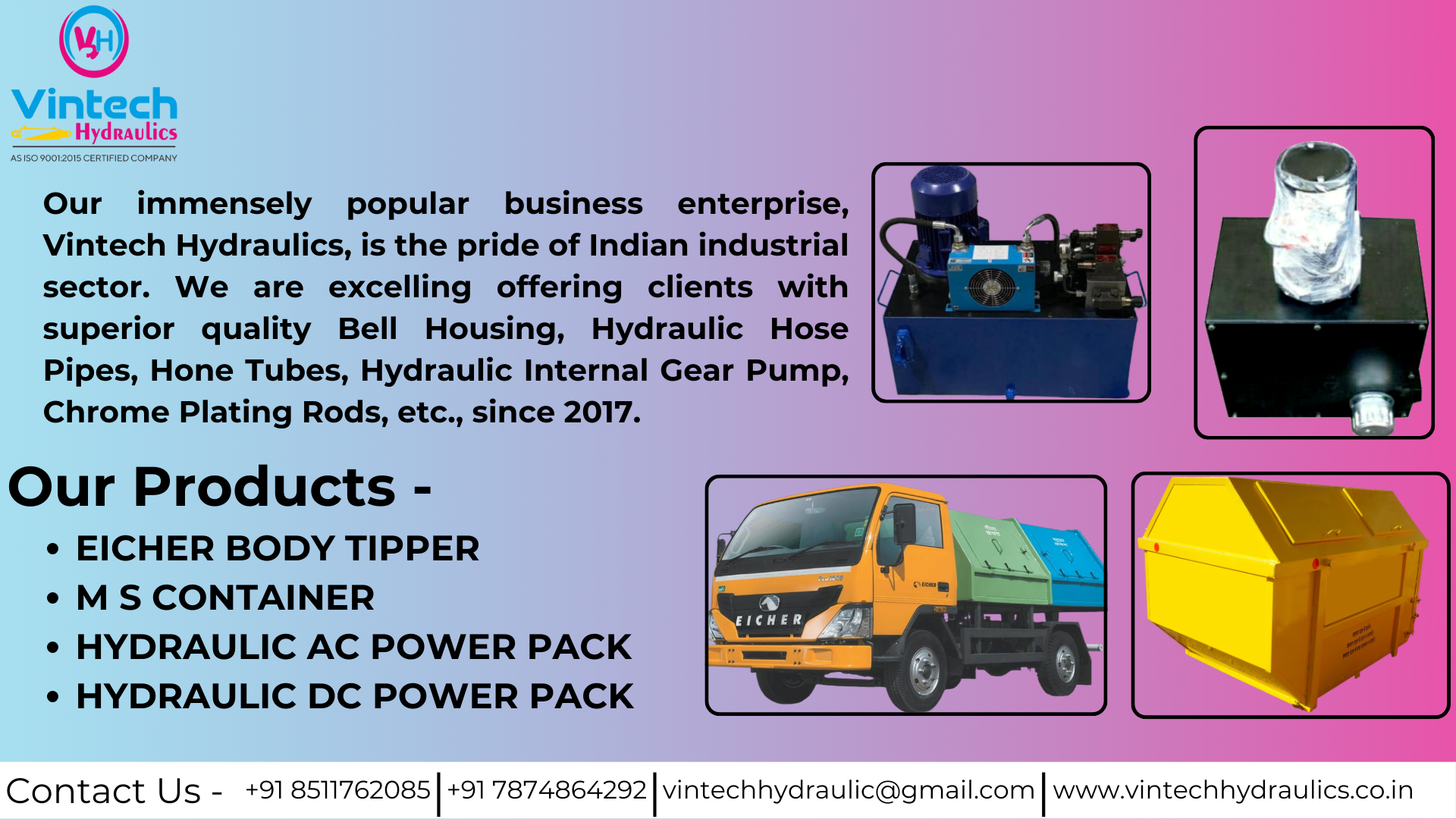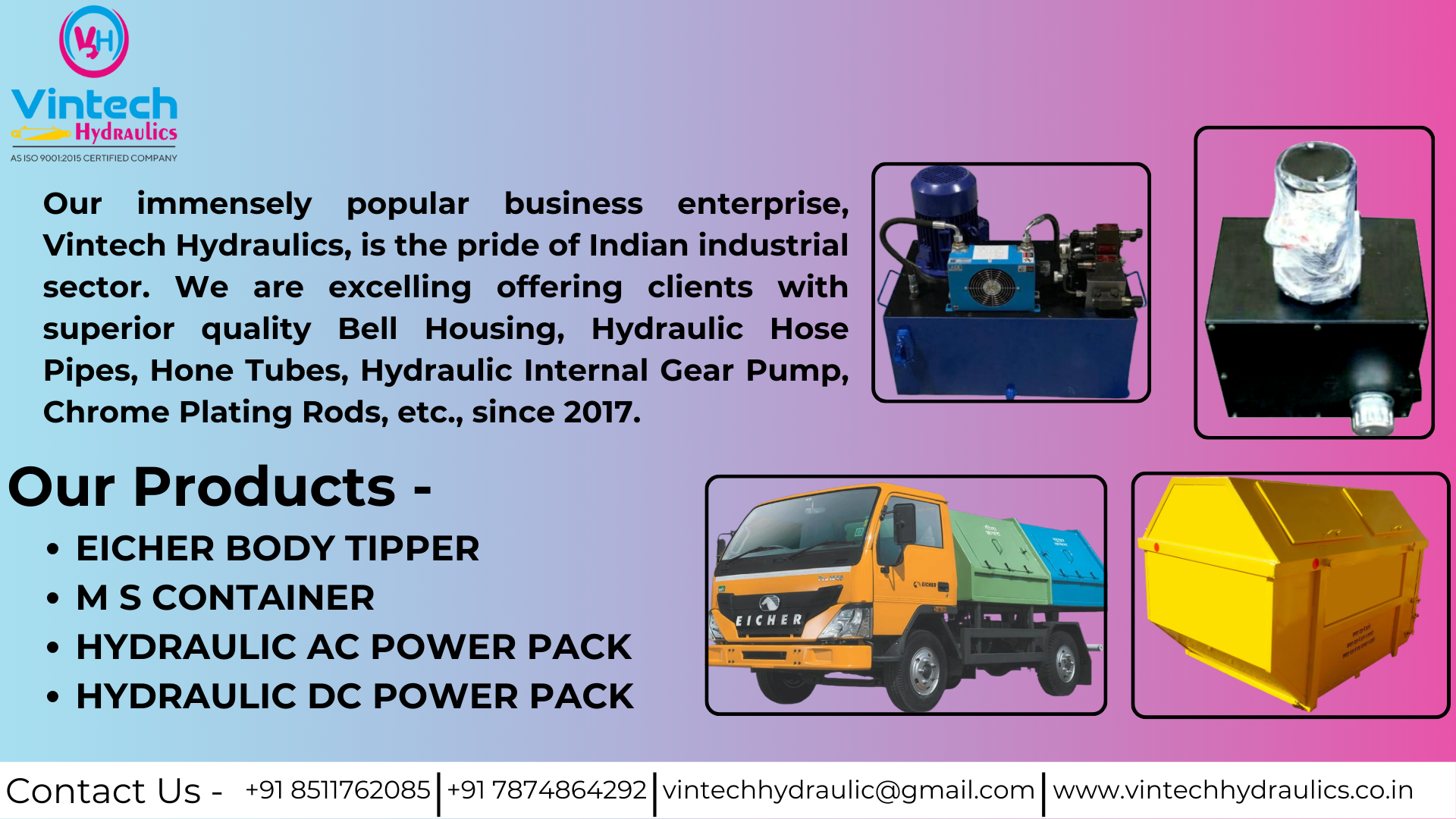
Hydraulic Gear Pump
Hydraulic Gear Pump
1. Introduction
A Hydraulic Gear Pump is a type of positive displacement pump commonly used in hydraulic systems to generate fluid flow under pressure. It works by meshing gears that trap fluid and force it through the pump outlet, creating hydraulic energy used to power machinery.
It’s one of the most widely used and reliable types of hydraulic pumps, ideal for low to medium pressure applications (up to 250 bar typically).
Contact:-+91 8511762085
Gmail:-vintechhydraulic@gmail.comWebsite:-https://vintechhydraulics.co.in/
2. How It Works
A gear pump typically consists of:
-
Two gears (driving gear and driven gear)
-
Pump housing
-
Inlet and outlet ports
As the gears rotate, fluid is trapped between the gear teeth and housing wall, carried around the outside of the gears, and pushed to the discharge side. The constant meshing of gears prevents backflow and builds up hydraulic pressure.
3. How It's Made (Manufacturing Process)
Step-by-Step Manufacturing of a Hydraulic Gear Pump:
| Step | Description |
|---|---|
| Design | Define parameters: flow rate (LPM), pressure (Bar), shaft type, mounting, etc. |
| Material Selection | Gears: Hardened steel or alloy Housing: Cast iron or aluminum |
| CNC Machining | Precision milling of gear profiles, shaft, bushings, and housing |
| Assembly | Inserting gears, aligning shafts, mounting seals, O-rings, and bushings |
| Pressure Testing | Testing for leaks, performance under load, and flow calibration |
| Finishing & Coating | Anti-corrosive coating, anodizing or painting for protection |
Gear precision and housing tolerances are key to efficiency and long service life.
4. Uses / Applications
Hydraulic gear pumps are used in a wide variety of hydraulic applications:
| Industry | Application Examples |
|---|---|
| Industrial Machinery | Presses, shears, conveyor lifters, injection molding |
| Agriculture | Tractor implements, harvesters, loaders |
| Construction Equipment | Backhoe loaders, bulldozers, cranes |
| Brick/Tile Plants | Hydraulic press and feeding systems |
| Automotive Equipment | Hydraulic lifts, dump trucks, loaders |
| Machine Tools | Lubrication and coolant systems |
| Waste Management | Baling machines and compactors |
| Feature | Description |
|---|---|
| Simple & Compact Design | Easy to install and maintain; ideal for small spaces |
| Continuous Flow Output | Smooth and steady flow without pulses |
| Self-Priming | Starts suction without needing manual priming |
| High Efficiency | 85–90% efficiency due to close gear-to-housing tolerances |
| Rugged Construction | Tolerates contamination better than vane or piston pumps |
| Reversible Rotation | Some models can operate in both directions |
| Wide Flow Range | Can produce from 1 LPM to 100+ LPM based on size |
Hydraulic gear pumps are essential because they:
-
Provide continuous fluid flow with less vibration
-
Are affordable, durable, and reliable for most hydraulic needs
-
Offer precise control for actuators like cylinders, motors, and valves
-
Serve as the heart of hydraulic systems in mobile and industrial equipment
Without a reliable gear pump, the entire hydraulic circuit fails to operate.
7. FAQs (Frequently Asked Questions)
What is the maximum pressure a gear pump can handle?
Typically up to 250 bar, though some high-performance units go beyond that.
What fluid is used in a hydraulic gear pump?
Usually ISO VG 32, 46, or 68 hydraulic oil, depending on temperature and application.
How do I know the flow rate of the pump?
It's rated in liters per minute (LPM); calculated based on displacement and RPM.
What are the common failure points?
Seal wear, gear erosion, cavitation (due to low oil), and housing distortion.
How often should it be serviced?
Every 6 to 12 months or as recommended based on usage; check oil, filters, and seals.
Can gear pumps be repaired?
Yes, seals, gears, bearings, and shafts can be replaced, though severe damage may require full replacement.
8. Types of Gear Pumps
| Type | Description |
|---|---|
| External Gear Pump | Two identical gears rotate in opposite directions – most common type |
| Internal Gear Pump | One gear inside another – quieter and ideal for low-speed, high-viscosity fluids |
| Gerotor Pump | Variation of internal gear pump, common in automotive systems |
A Hydraulic Gear Pump is a reliable, economical, and efficient choice for hydraulic systems across countless industries. Whether you're operating a small agricultural loader or an industrial press machine, this pump delivers precise fluid power, is easy to maintain, and comes in custom sizes and configurations to meet your needs.
It’s truly a “workhorse” in the hydraulic world – simple, strong, and indispensable.
